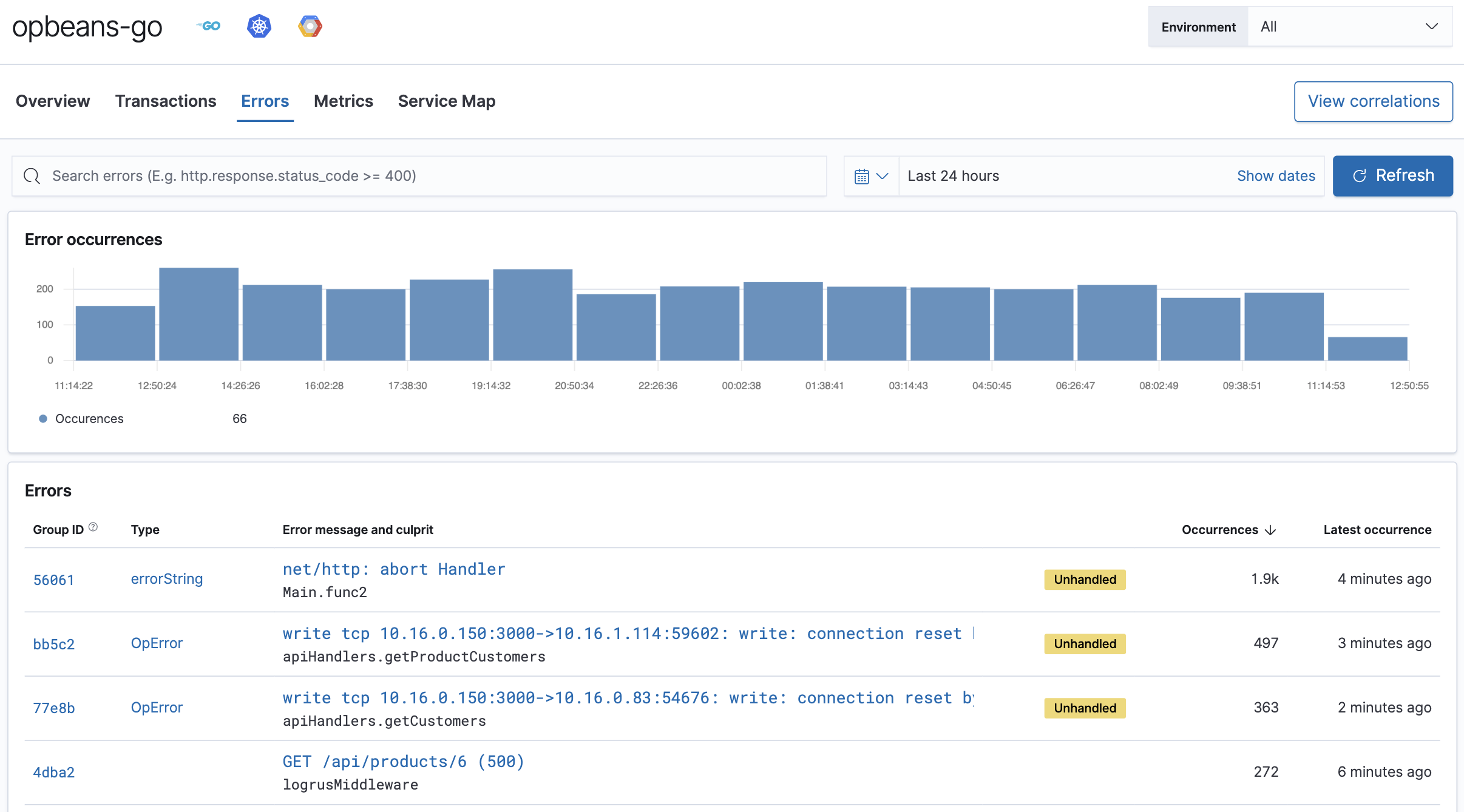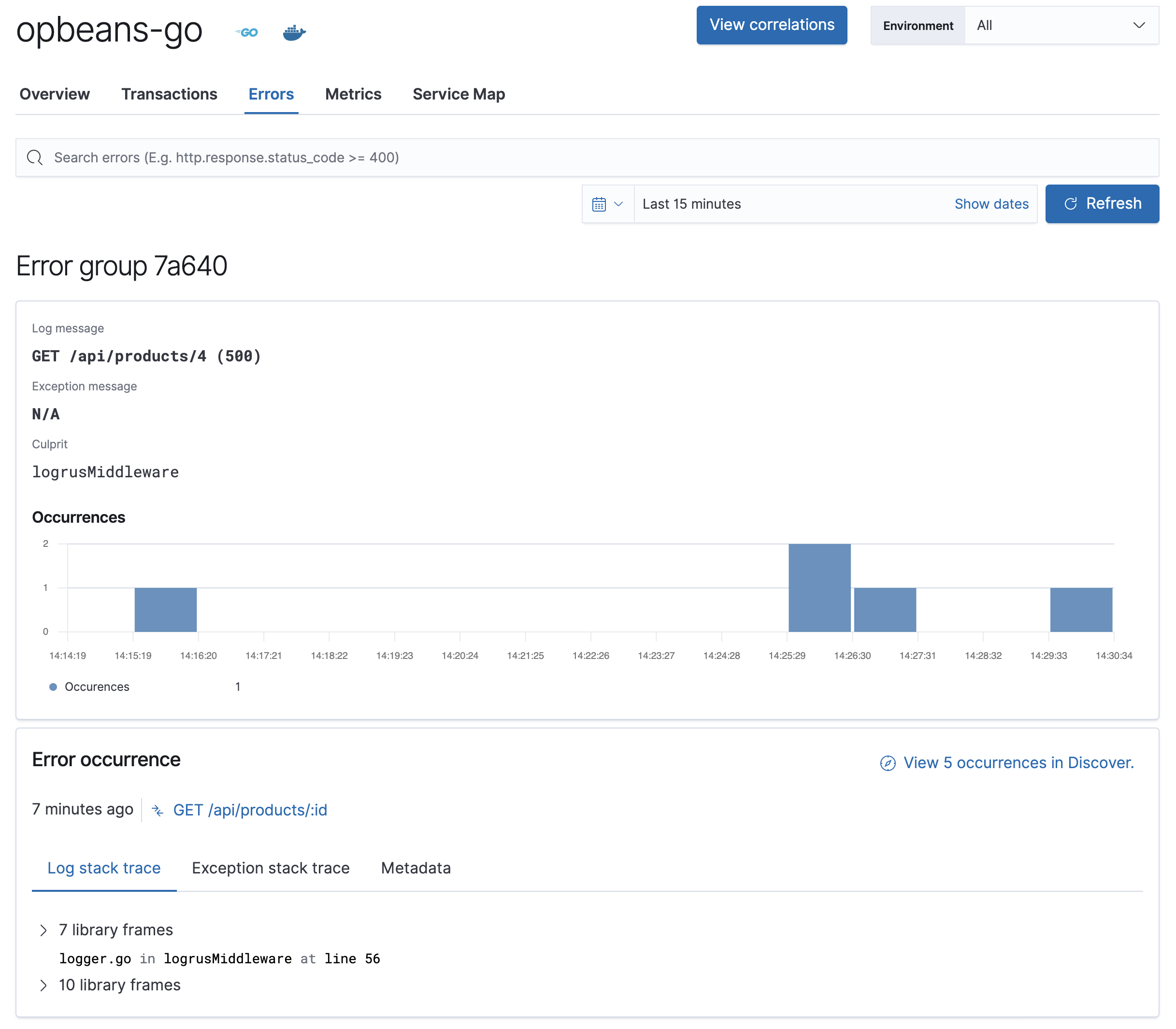Errors
editErrors
editErrors are groups of exceptions with a similar exception or log message.
The Errors overview provides a high-level view of the exceptions that APM agents catch, or that users manually report with APM agent APIs. Like errors are grouped together to make it easy to quickly see which errors are affecting your services, and to take actions to rectify them.
A service returning a 5xx code from a request handler, controller, etc., will not create an exception that an APM agent can catch, and will therefore not show up in this view.

Selecting an error group ID or error message brings you to the Error group.

Here, you’ll see the error message, culprit, and the number of occurrences over time.
Further down, you’ll see the Error occurrence table. This table shows the details of a sampled error within this group. The error shown is always the most recent to occur.
Each error occurrence features a breakdown of the exception, including the stack trace from when the error occurred, and additional contextual information to help debug the issue. In some cases, you might also see a Transaction sample ID. This feature allows you to make a connection between the errors and transactions, by linking you to the specific transaction where the error occurred. This allows you to see the whole trace, including which services the request went through.